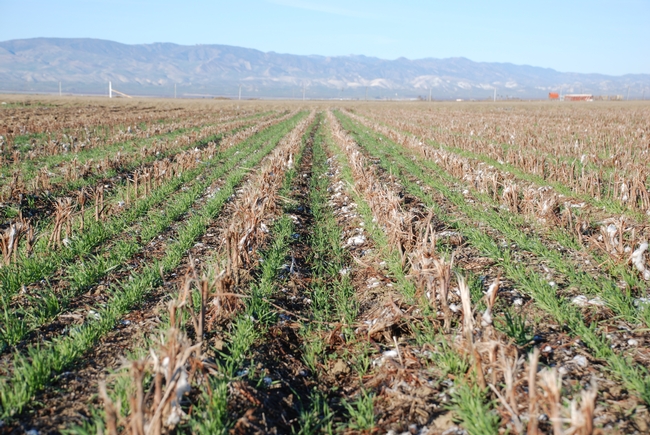
The article featured a number of California farmers who sang the praises of the no-till farming method.
- "We definitely save money through higher production, less water usage and lowered equipment and fuel costs," said Modesto farmer Jesse Sanchez
- "We started in 1985 using the no-till method, and since then we've doubled our yield potential," said Fritz Durst, a Yolo County farmer
- "I not only get great production, I save a great deal by not buying expensive tilling equipment, and I look to double my production in times of little rainfall because no-till increases the water-storing capacity of the soil," said Michael Crowley, a Turlock farmer
UC Agriculture and Natural Resources (UC ANR) conservation agriculture expert Jeff Mitchell said the slow implementation of no-till in California is "largely a matter of our farmers not being familiar with no-till practices."
Tillage became popular in California in the 1930s. The agricultural systems developed in the state were wildly successful.
"Because they worked so well, and were so profitable, nobody has felt they should make a change," said Mitchell, who is a UC ANR Cooperative Extension specialist based at the UC Kearney Agricultural Research and Extension Center.
Mitchell is chair of the Conservation Agriculture Systems Innovation Center, a group of farmers, researchers, USDA scientists and ag industry professionals who are working together to spread the word about and encourage adoption of no-till production. Key CASI messages were shared in the Comstock article.
“Since water does not evaporate as quickly in no-till fields, savings in water cost are easy to determine,” Mitchell said. “In addition, fewer pesticides are often needed and farmers also save money by the diminished need to buy the expensive tilling equipment and to pay people to run them.” He adds that soil in the fields, no longer exposed by the tilling, remains richer in its biodiversity and can sustain higher yields. Compaction of the soils, caused by the heavy tilling equipment, is reduced.